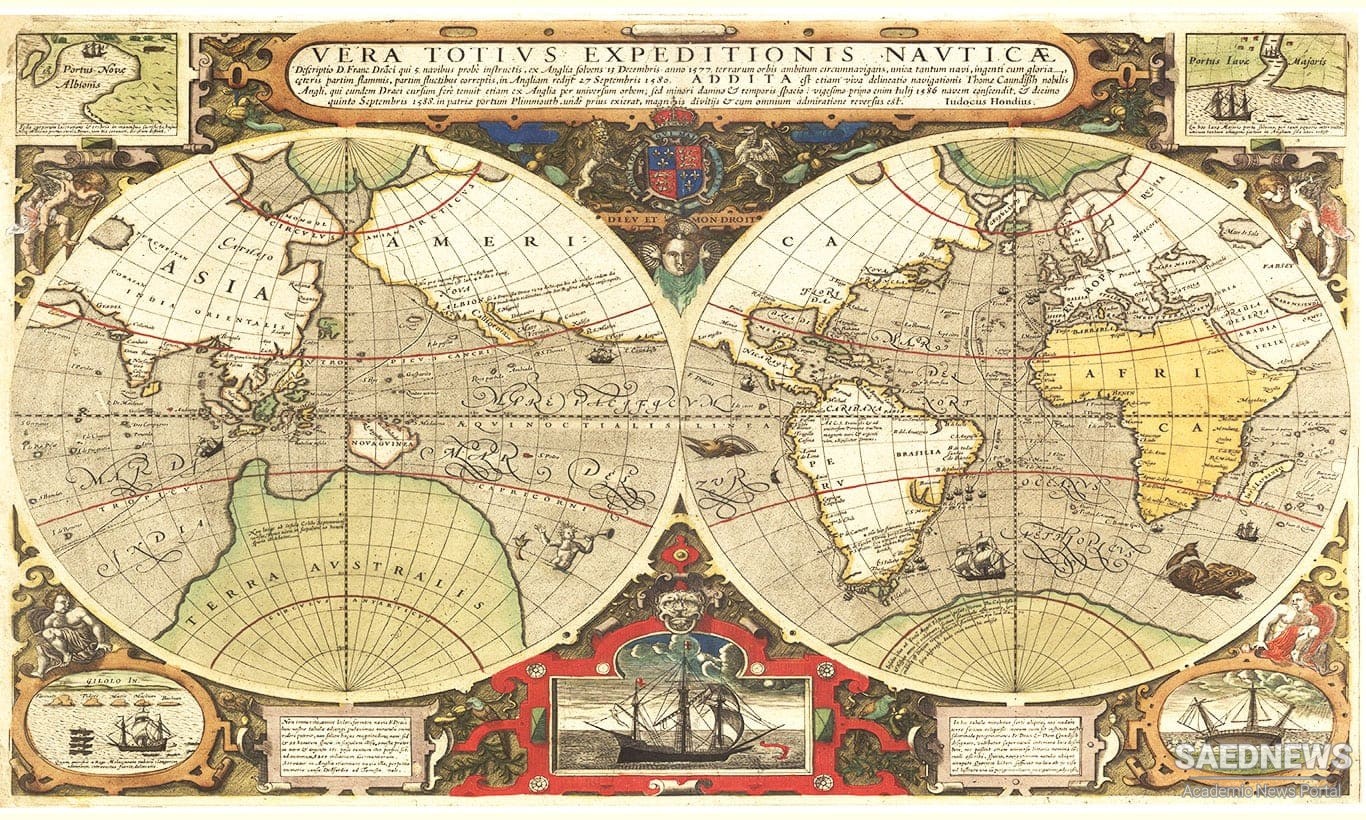Northern Mesopotamia was disputed territory, sometimes ruled by Rome, sometimes by Persia, sometimes by local dynasties. Sometimes it was even considered to be part of Syria, a term more commonly used, rather loosely, to designate the area bounded by the Taurus Mountains in the north, the Sinai desert in the south, the Arabian desert in the east, and the Mediterranean Sea in the west. The name Syria is of uncertain origin. Herodotus explains it as a shortened form of Assyria. Modern scholars have traced it to various local place names. It first appears in Greek and has no recognizable antecedents, either in its form or in its usage, in pre-Hellenistic texts. Well established in Roman and in Byzantine official usage, this Greek term virtually disappeared after the Arab conquest in the seventh century. It remained in occasional use in Europe, especially after the revival of classical learning, and with it of Graeco-Roman terminology, that followed the Renaissance. In the Arab, and more generally, the Muslim world, the region formerly called Syria was known as Shâm, a name also given to its major city, Damascus. The name Syria — in Arabic Sûriya - makes an occasional rare appearance in geographical writings, but was otherwise unknown until the latter part of the nineteenth century, when it reappeared under European influence. It was officially adopted as the name of a province — the vilayet of Damascus — by the Ottoman administration in 1865, and first became the official designation of a country with the establishment of the French Mandate after the First World War. Of the older, local names of the country that have come down to us, the most widely used was 'Aram', after the name of the Aramaean peoples who had settled both Syria and Mesopotamia. As Mesopotamia was known as 'Aram of the Two Rivers', so were southern and northern Syria known as 'Aram of Damascus' and 'Aram of Zoba' (i.e. Aleppo).
More commonly, however, the countries forming the western arm of the Fertile Crescent were called by the names of the various kingdoms and peoples that ruled and inhabited them. Of these, the most familiar, or at least the best documented, are the southern lands, known in the earlier books of the Hebrew Bible and some other ancient writings as Canaan. After the Israelite conquest and settlement, the area inhabited by them came to be described as 'land of the children of Israel' (Joshua 11:22) or simply 'land of Israel' (1 Samuel 13:19). After the break-up of the kingdom of David and Solomon in the tenth century BCE, the southern part, with Jerusalem as its capital, was called Judah, while the north was called Israel, or, later, Samaria. The northern and southern coastal areas were known, after the peoples who inhabited them, as Phoenicia and Philistia. The Philistines disappeared at the time of the Babylonian conquests and were not heard of again. The Phoenicians remained until Roman and early Christian times on the coastal plain of what is now northern Israel and southern Lebanon. After the Persian conquest in the sixth century BCE, the area resettled by the returning exiles was known as Yehud. In Roman usage, also reflected in the New Testament, the south, centre, and north of the country are called respectively, Judaea, Samaria and Galilee. To these one may add the southern desert, which the Romans called Idumea, from the Biblical Edom, and which today is known as the Negev, and Peraea, in the lands east of the Jordan river.
The dominant languages in both Mesopotamia and Syria were Semitic, but subdivided into several different families. The oldest of these was the Akkadian family, to which both Assyrian and Babylonian belong, and which was generally used in Mesopotamia. Another was the Canaanite family, including biblical Hebrew, Phoenician, with its North African offshoot, Carthaginian, as well as a number of other closely related languages known from inscriptions in both northern and southern Syria. By the beginning of the Christian era, most of these languages had virtually disappeared, and had been replaced by a group of closely related languages belonging to another Semitic family, called Aramaic. Of the Canaanitic languages, Phoenician was still spoken in the Levant seaports and the North African colonies; Hebrew, though no longer the common spoken language of the Jews, survived as a language of religion, literature, and scholarship. Assyrian and Babylonian appear to have died out completely. Aramaic became an international medium of communication for commerce and diplomacy, and was widely used, not only in the Fertile Crescent, but also in Persia, Egypt and what is now southern Turkey.
At the beginning of the Christian era, Arabic, historically the last of the Semitic languages to enter the region, was in the main confined to the central and northern parts of the Arabian peninsula. The more advanced city cultures of the southwest, in the present-day Yemen, spoke yet another Semitic language, known as South Arabian, and closely related to Ethiopie, which had been carried by south Arabian colonists to the Horn of Africa. In the north, there is evidence that Arabic speakers had entered and settled the Syrian and Iraqi borderlands even before the great Arab conquests of the seventh century, which led to the triumph of Arabic all over the region. In the Fertile Crescent, Aramaic was replaced by Arabic. At the present day it survives in the rituals of some of the Eastern Churches and is still spoken in a few remote villages.


 Middle East: Between Roman and Persian Empires
Middle East: Between Roman and Persian Empires














































